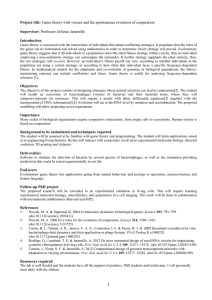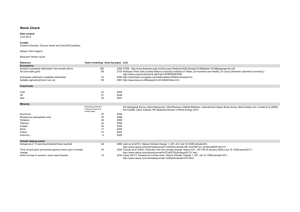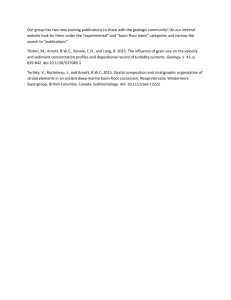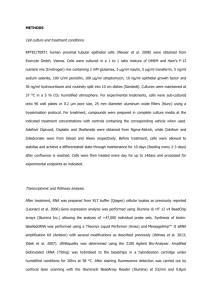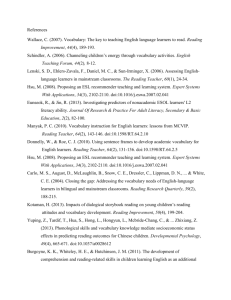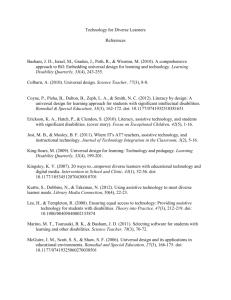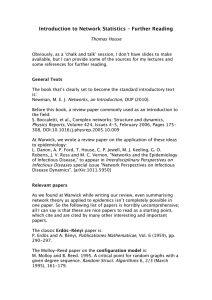Plant Genetics PBG 530 Crops Building 232 Winter Term 2013
advertisement
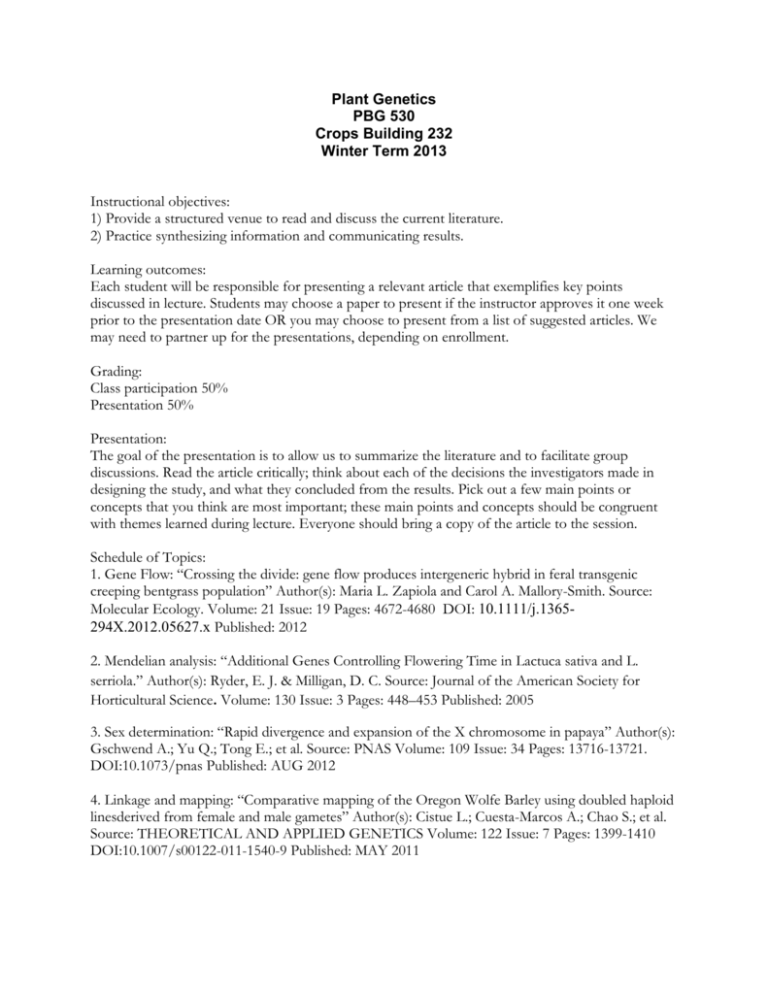
Plant Genetics PBG 530 Crops Building 232 Winter Term 2013 Instructional objectives: 1) Provide a structured venue to read and discuss the current literature. 2) Practice synthesizing information and communicating results. Learning outcomes: Each student will be responsible for presenting a relevant article that exemplifies key points discussed in lecture. Students may choose a paper to present if the instructor approves it one week prior to the presentation date OR you may choose to present from a list of suggested articles. We may need to partner up for the presentations, depending on enrollment. Grading: Class participation 50% Presentation 50% Presentation: The goal of the presentation is to allow us to summarize the literature and to facilitate group discussions. Read the article critically; think about each of the decisions the investigators made in designing the study, and what they concluded from the results. Pick out a few main points or concepts that you think are most important; these main points and concepts should be congruent with themes learned during lecture. Everyone should bring a copy of the article to the session. Schedule of Topics: 1. Gene Flow: “Crossing the divide: gene flow produces intergeneric hybrid in feral transgenic creeping bentgrass population” Author(s): Maria L. Zapiola and Carol A. Mallory-Smith. Source: Molecular Ecology. Volume: 21 Issue: 19 Pages: 4672-4680 DOI: 10.1111/j.1365294X.2012.05627.x Published: 2012 2. Mendelian analysis: “Additional Genes Controlling Flowering Time in Lactuca sativa and L. serriola.” Author(s): Ryder, E. J. & Milligan, D. C. Source: Journal of the American Society for Horticultural Science. Volume: 130 Issue: 3 Pages: 448–453 Published: 2005 3. Sex determination: “Rapid divergence and expansion of the X chromosome in papaya” Author(s): Gschwend A.; Yu Q.; Tong E.; et al. Source: PNAS Volume: 109 Issue: 34 Pages: 13716-13721. DOI:10.1073/pnas Published: AUG 2012 4. Linkage and mapping: “Comparative mapping of the Oregon Wolfe Barley using doubled haploid linesderived from female and male gametes” Author(s): Cistue L.; Cuesta-Marcos A.; Chao S.; et al. Source: THEORETICAL AND APPLIED GENETICS Volume: 122 Issue: 7 Pages: 1399-1410 DOI:10.1007/s00122-011-1540-9 Published: MAY 2011 5. DNA form and function: “The genome of woodland strawberry (Fragaria vesca)”Author(s): Shulaev Vladimir; Sargent Daniel J.; Crowhurst Ross N.; et al. Source: NATURE GENETICS Volume: 43 Issue: 2 Pages: 109-U51 DOI: 10.1038/ng.740 Published: FEB 2011 6. From gene to phenotype: “The gene for fragrance in rice” Author(s): Bradbury LMT; Fitzgerald TL; Henry RJ; et al. Source: PLANT BIOTECHNOLOGY JOURNAL Volume: 3 Issue: 3 Pages: 363-370 DOI:10.1111/j.1467-7652.2005.00131.x Published: MAY 2005 7. Transgenics: “Golden rice: Introducing the beta-carotene biosynthesis pathway into rice endosperm by genetic engineering to defeat vitamin A deficiency” Author(s): Beyer P; Al-Babili S; Ye XD; et al. Source: JOURNAL OFNUTRITION Volume: 132 Issue: 3 Pages: 506S-510S Published: MAR 2002 8. Ploidy: “Polyploidy and crop improvement ” Author(s): Udall Joshua A.; Wendel Jonathan F. Source: CROP SCIENCE Volume: 46 Supplement: 1 Pages: S3-S14 DOI:10.2135/cropsci2006.07.0489tpg Published: NOV 2006

